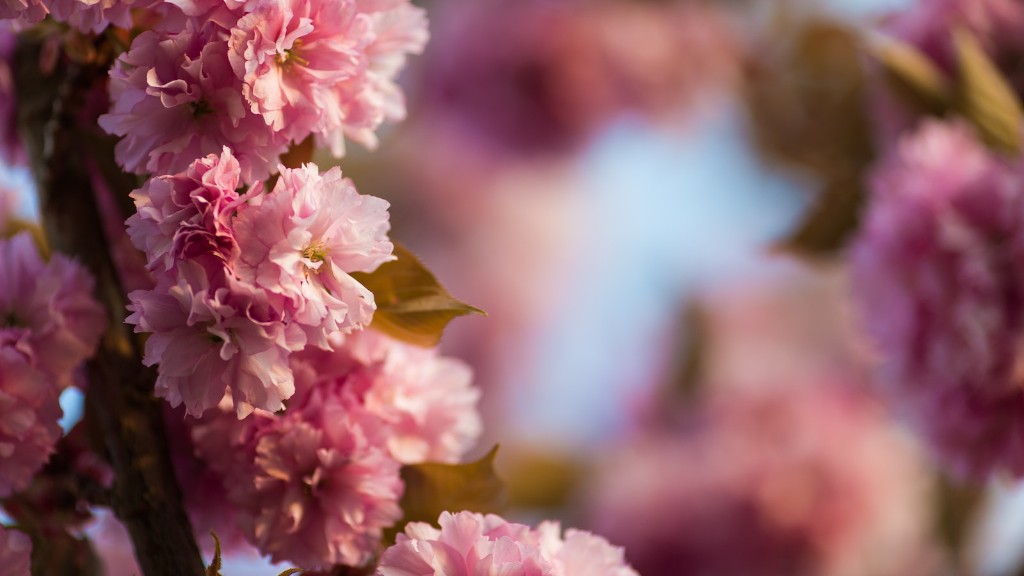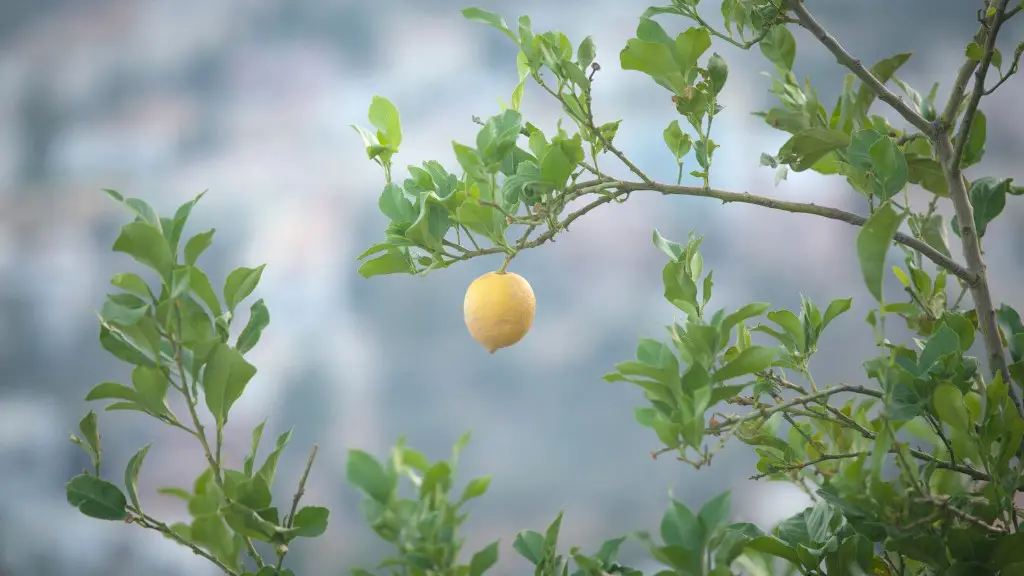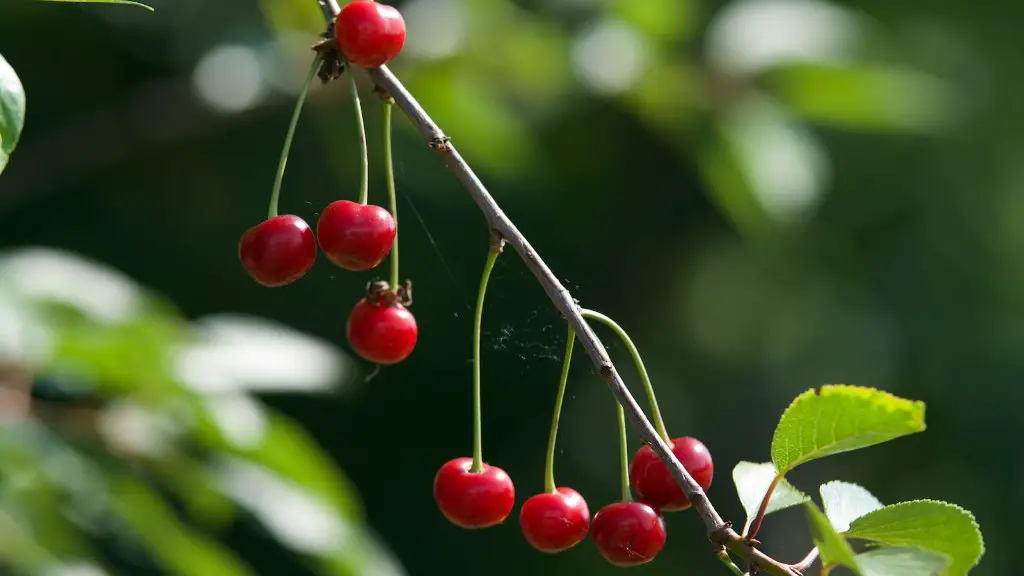Cherry trees are a symbolic part of summertime, and if you want to enjoy sweet and juicy home-grown cherries, you’ll need to understand the cherry tree growth stages, and how long it takes for a cherry tree to produce cherries. As a gardener, it can be exciting to watch fruit trees flourish and bear fruit, but you may be asking yourself, “Can I pick cherries soon?”.
Knowing the life cycle of a cherry tree and the amount of time it takes for a cherry tree to produce cherries can help you know exactly when to expect a windfall of delicious fruit. Understanding the different cherry tree growth stages is key, as this will help determine the cherry tree harvest time and how to keep the tree healthy so that it will produce the maximum number of cherries.
The time for a cherry tree to produce cherries can vary, depending on the variety of tree, the environment, and planted. Generally, cherry trees begin to bear fruit two to four years after being planted. Once the tree has begun to produce fruit, they are expected to continue producing cherries for many years, as long as they are taken proper care of. There are a few signs cherry trees will give to indicate that they are ready to produce fruit.
For instance, on an established cherry tree, you will notice developing flower buds in the winter, to coincide with the average temperatures in your area. In early spring, you will see the buds opening up to small white and pink flowers, depending on the cherry tree variety. This bloom period typically lasts for three or four weeks. The blooming usually begins late enough in the season for any spring frosts to have a low risk of impacting the yield of the tree.
In the summer months, about three months after blooms, you will notice orbs at the ends of branches. These orbs will eventually become cherries. The orbs then change texture and colour to eventually become the plump cherries you see on the trees. By the time summer has ended, the cherries should be ready for harvest. Further, the size of cherries will vary based on the type of tree and the climate in which they are grown.
It is important to remember, however, that cherries don’t always bear fruit. This is due to low pollination rates, which can make cherry trees unfruitful. If you want to enjoy sweet, juicy home-grown cherries, you’ll want to understand the cherry tree growth stages and when they will be ready to harvest, to avoid disappointment.
Growth and Pruning
Cherry trees grow best in full sun, eight hours of it is the best for the long-term health of the tree. The soil should be well-drained and of a loamy consistency, avoiding areas that are delicate or prone to water-logging. If you have an older tree, it may need to be pruned and thinned each year, as this will encourage good air flow and keep the branches strong. If possible, remove damaged, diseased or crossed branches in late winter or early spring, as this will improve the health of the tree and encourage better growing and fruiting.
Fertilizing and Watering
Fertilizing the cherry tree with a balanced fertilizer will help the tree grow better and faster, which will also help it produce more fruit. It is best to apply the fertilizer in late winter, just before the buds begin to break. Applying fertilizer again in early summer is also recommended, because this will give the young fruit a boost just as it begins to swell. Watering the tree is also important, as the young fruit needs regular moisture for optimal performance.
Pollination and Protection
Pollination is essential for any cherry tree to produce fruit, and as such, it is important to consider how you can help facilitate the transfer of pollen from one flower to another. One of the best and most efficient ways to do this is to hang bee boxes around the tree, as bees are essential pollinators of this type of tree, and will help ensure that fruit can be produced. Further, providing adequate protection from birds and other pests is important. Bird netting can be placed around the tree, to catch any birds that are trying to steal the fruit, which will also help protect the tree’s fruit production.
Harvesting
Once the cherries are ripened and are ready for harvesting, it is important to know how to properly pick the cherries from the tree. Wait until the stem of the cherry easily slips away from the fruit when tugged gently. This is usually a sign that the cherry is ripe enough for picking. Be sure to plane the tree with a ladder, as you do not want to damage the branches. The harvest period usually lasts from early summer to late summer, and it is at this time that you should be prepared to pick the cherries from the tree.
Storing and Processing
Once you have harvested the cherries from the tree, you will need to determine how you plan to store and process them. It is best to pick cherries as close as possible to the time you plan to eat them, as they will not last long at room temperature. If you plan to freeze the cherries, be sure to pick them at their peak ripeness, and then clean and de-stem the fruit. You can store frozen cherries in plastic bags or containers in the freezer, where they will remain fresh for up to a year.
Extending Life
If you want to extend the life of your cherry tree, as well as the time for it to produce cherries, there are a few things you can do. Make sure the tree is well-watered, since this will allow it to absorb nutrients and retain moisture, both of which are important for a healthy tree. Additionally, prune the tree regularly, as this will help keep it from becoming overgrown, and will help it to thrive and produce fruit for many years to come. You should also fertilize the tree regularly to ensure that it is getting all of the nutrients it needs to produce fruit.
Managing Pests
Keeping pests away from your cherry tree is essential for it to produce quality fruits. Cherry trees can be prone to aphids and other pest infestations, so it is important to keep an eye out for any signs of damage. If you notice any damage, make sure to take action quickly. A pesticide can help to eliminate the pests and prevent them from causing further damage. Additionally, you can encourage beneficial insects, such as ladybugs or lacewings, which will help to control the pests.
Conclusion
The time for a cherry tree to produce cherries can vary, but it usually takes two to four years for a cherry tree to start bearing fruit. By understanding the cherry tree growth stages and providing the tree with proper care and attention, you should expect the tree to fruit and be able to enjoy the sweet harvest year after year. With the proper care, your cherry tree can last for many generations, and it can be a rewarding experience when the tree finally does begin to bear fruit.



